Cozy Luxembourg is the capital of the country of the same name. At the strategically important site where Roman trade routes intersected, fortifications have been built ever since the city’s founding on the rocky promontories on the Alzette River.
Raised across the river are the compact city centers with atmospheric plazas, churches, museums and many places of magnificent views of the river valley to some of the city’s newer neighborhoods. This is where you will find, among others, the Luxembourg Grand Duke’s Palace, the city’s cathedral and several atmospheric plazas with Place d’Armes at the forefront.
Luxembourg’s status as home to several EU institutions has made it an international city. This can be seen in the district of Kirchberg, where the EU buildings are located, and in the street scene, where both population and visitors come from all parts of the continent.
The city of Luxembourg in the Roman geography gives close access to German Trier, and of course there are many excursion destinations in the Principality, which as the capital is convenient to travel in without long distances. The countryside is green, beautiful and hilly, and nice provincial towns, vineyards and castles are among the sights.
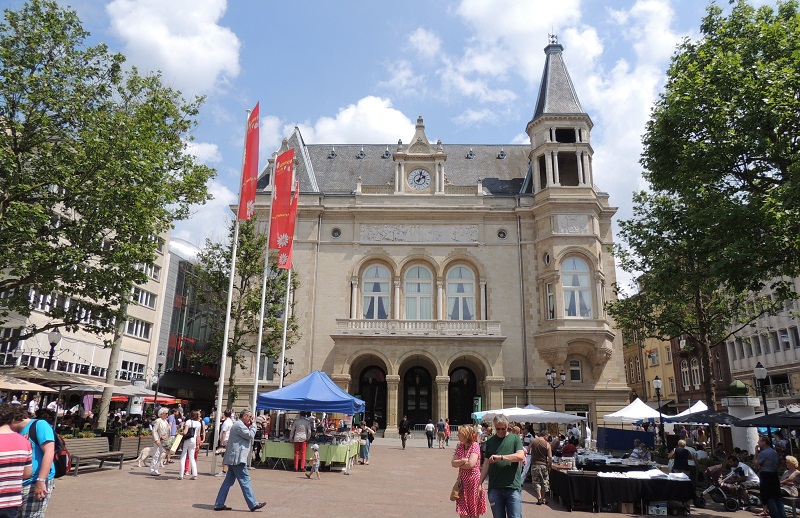
This one of Luxembourg’s central plazas was completed in 1671 and it was last renovated in 1986. The site is always rich in public life, and there are many eateries and cafés with outdoor dining.
In 1996, the Luxembourg City Museum opened in the exciting museum building, built over several old houses in the heart of the old city. Here you can see the Luxembourg Story, which is a permanent exhibition about the long history of the capital.
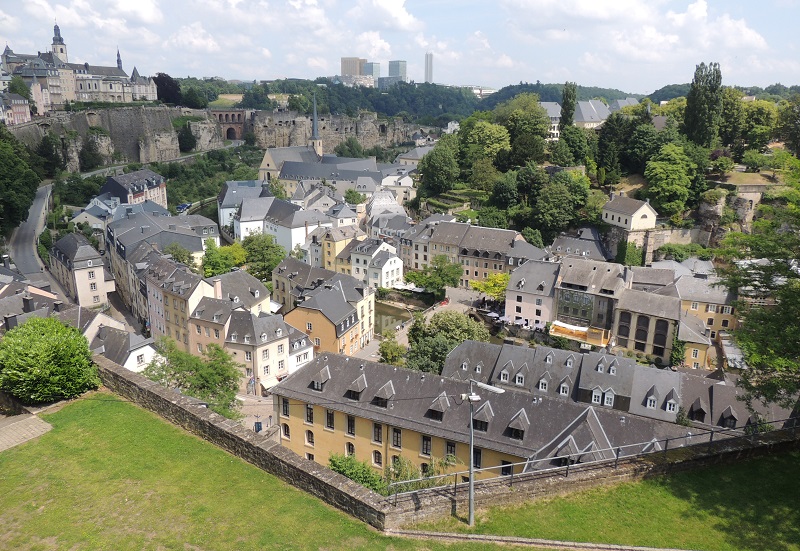
This is a famous street in the city of Luxembourg, and a walk along the Corniche offers one of the most beautiful views in Luxembourg. The route follows the old, now partially demolished fortifications.
This museum opened its doors in 1939, and over the following decades, collections grew and the first expansion occurred in the 1960s, while the actual expansion to today’s modern museum happened in the period 1999-2002. You can see a lot of interesting exhibitions at the museum.
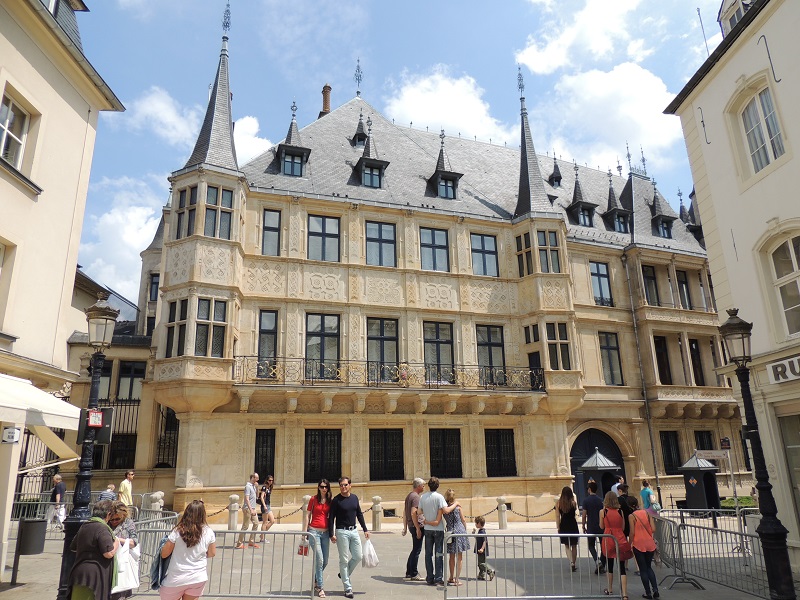
The Grand Ducal Palace is the official residence of the country’s regent, the Grand Duke. This is also where the duke performs some of the duties as a monarch.
The foundation stone of Cathedral of Our Lady was laid in 1613, and the church was consecrated in 1621. It was erected as a Jesuit church in the Dutch Bedouin, where there are features from the Renaissance.
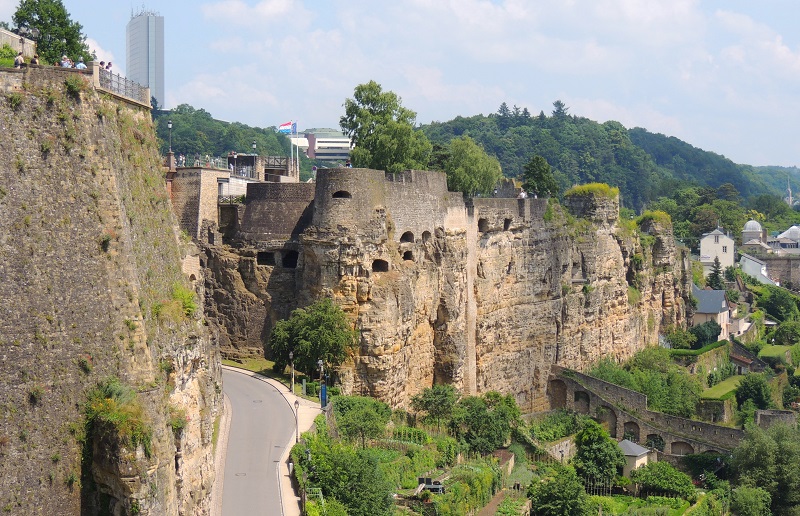
The Bock Rock is the arsenal of Luxembourg City, being the site that Count Siegfried bought in 963 and on which he subsequently built his castle.
The Adolphe Bridge is one of Luxembourg’s landmarks. It is beautifully situated above the river Pétrusse and it was built as the new districts developed south of the river and the old town.
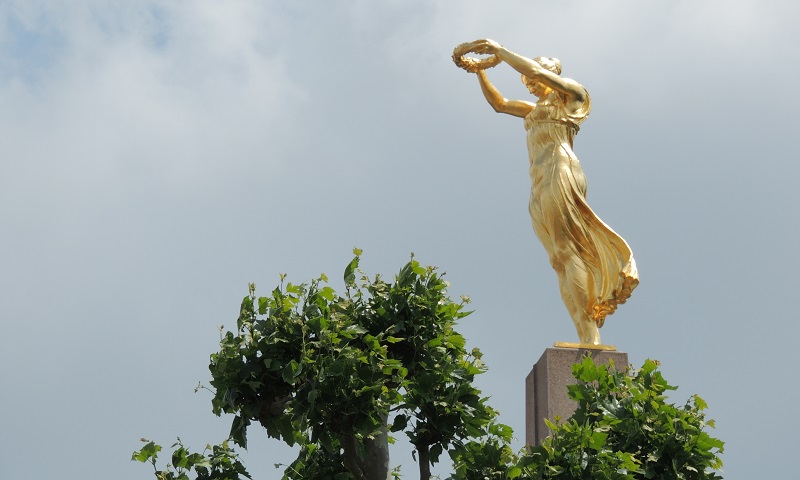
This plaza was created by Vauban in 1685. Formerly the strong Beck bastion was built on the site. In the square you can see Gëlle Fra, which is an obelisk with a female statue on top. The memorial was inaugurated in 1923 and is today a monument to the country’s soldiers in various wars.
MUDAM is Luxembourg’s leading museum of modern art. Besides the many works by, among others, Alvar Aalto, the museum building itself is experience.
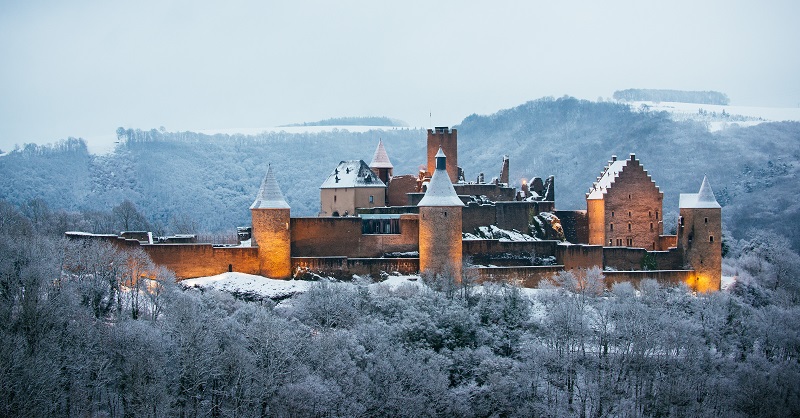
The Bourscheid Castle is incredibly picturesque 150 meters/500 ft above the meandering river of the Sûre River through a hilly, wooded landscape.
The town of Clervaux is idyllically situated in a valley among wooded mountains. A visit is like dating back several centuries to the Middle Ages.
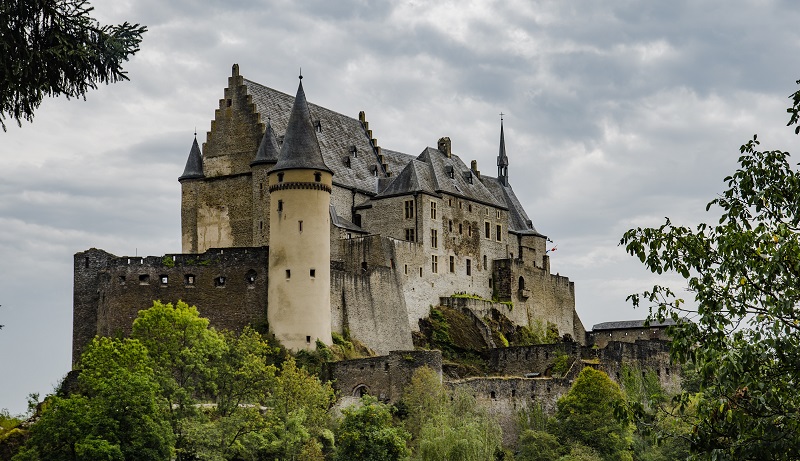
Like many other cities in Luxembourg, Vianden is a very cozy city with a medieval atmosphere and a majestic castle that dominates the cityscape.
Trier is Germany’s oldest city, and here you can see a lot of sights from the city’s long history. They are i.e. from the Roman era, which is very visible in Trier, with Porta Nigra and the Kaiserthermen.
5 Rue Alphonse Weicker
auchan.lu
Route d’Arlon
belle-etoile.lu
80 Route de Longwy
concorde.lu
26 Place de la Gare
2 Rue des Romains
walfer-shopping-center.lu
Nationalmusée fir Naturgeschicht/Musée National d’Histoire Naturelle
Fëschmaart/Marché aux Poissons
mnhn.lu
Musée des P&T
4 Rue d’Epernay
pt.lu
Jardin des Papillons
Route du Vin, Grevenmacher
papillons.lu
Musée de Tramways et de Bus
Rue de Bouillon 63
rail.lu/tramsmusee.html
Train 1900
Pétange, 25 km/16 mi SW
train1900.lu
Luxembourg’s official founding took place in 963, when Count Siegfried bought a rock outcrop on the Alzette River by the church in the nearby town of Trier.
The rocky promontory was the meeting point of two ancient Roman roads, and there is believed to have been a form of military settlement called Lucilinburhuc, which later became Luxembourg. Lucilinburhuc means a small fortress, which is still clearly seen in many places in the city today.
The rocks were quickly built by Siegfried with a castle, and soon after the first urban construction came. It was among other craftsmen and traders who settled on and below the castle cliff, and thus the so-called upper and lower cities were already established at this early stage of Luxembourg’s history.
The place quickly proved to be of clear strategic importance to the area that Siegfried had intended. Over the next several centuries, strengthened fortifications of the ever-expanding settlement were the largest civil engineering works. At the end of the 1100s, the first ring of stone bastions was erected, and thus it was possible to talk about an actual city.
At the beginning of the 1300s, the population pressure on the original, five-hectare city within the walls had become so significant that new defenses were built to the west so that Luxembourg could be expanded in this direction to 23 hectares. It was a major expansion, and the new western city wall (which ran at today’s Boulevard Royal) also formed the city boundary until 1867. The population at the beginning of the 1300s was 5,000.
In 1354, Luxembourg gained the status of duchy, and in the following centuries became involved in the political and military battles of the surrounding powers. The first time was in 1443, when Philip the Good, Duke of Burgundy, conquered the city, which was integrated into the territory of the Netherlands. In doing so, Luxembourg was also included in the clashes with the Habsburgs.
Luxembourg changed hands four times within a number of years before joining the victorious Spanish Habsburgs. Spaniards strengthened the city’s defenses, and the result was a heavily fortified city that had not only been strengthened against the open plain to the west, but also on the slopes to the river valleys of the north, south and east.
The Habsburg era lasted until 1684, when Louis XIV’s French troops, under the military engineer Vauban’s leadership, conquered Luxembourg. During the 13-year French rule, Vauban expanded and restructured the city’s defense in great style. The lower neighborhoods, which were more difficult to defend, were integrated throughout the area’s defense through new buildings.
In 1697, Luxembourg was returned to the Habsburgs, and after that was almost a century of relative calm. By the end of the 18th century, the population had risen to around 8,500.
Eventually, the power of the Spanish Habsburgs was weakened, and after a long blockade, France conquered Luxembourg in 1795. Through peace negotiations after the Napoleonic Wars, the Grand Duchy of Luxembourg was established as part of the German Confederation in 1815, and in this connection the city became a German garrison city.
In 1867 there was a close outbreak of war between Bismarck’s Germany and Napoleon III’s France. The war was avoided, and with the signing of the London Peace Agreement, Luxembourg was declared a neutral state in continued personnel union with the Netherlands. A concrete consequence was also that large parts of the city of Luxembourg’s defense works had to be demolished.
After a 900 year period as a fortress city, Luxembourg now had to find a new identity without the many defense buildings. Soon it became clear that it created a unique opportunity for unprecedented expansion, as the old city walls’ growth boundaries were no longer an obstacle, neither geographically nor population wise. Examples of that planning were the construction of the city park to the west, the suburbs of Belair and Limpertsberg as well as the avenue Avenue de la Liberté on the Bourbon Plateau. Many new inhabitants arrived, and after World War I, 46,500 people lived in the city.
During the First World War, Luxembourg was occupied by German troops during the period August 1914-November 1918. During World War II, the city and the country were again occupied, and the capital was liberated on September 10, 1944. Subsequently, bombings continued from German V3 guns.
Luxembourg sought to get international organizations established in the city, and this quickly escalated from 1952, when foreign ministers from landing in the predecessor of today’s EU, the Coal and Steel Union, met in the city and decided to make it the provisional headquarters. With the establishment of the EC in 1957, several of the common market institutions were established in Luxembourg: the Court, the Investment Bank and Parliament’s Secretariat are some of them.
From the 1960s, construction in Luxembourg increased again. The European quarter of the suburb of Kirchberg was built, and today 8,000 work here. The financial sector also grew sharply, the number of bank representations growing from 17 in 1960 to 218 in 1994.
In addition to prosperity, the EU and the financial sector have brought a high degree of internationalization. Thus, almost half of Luxembourg’s inhabitants are foreigners. It leaves its mark on the city, which, despite its modest size in the European context, seems like a cosmopolitan metropolis with an exciting cultural life.
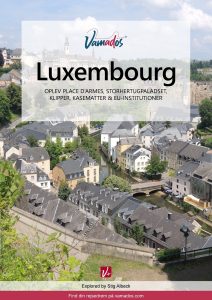
Overview of Luxembourg
Cozy Luxembourg is the capital of the country of the same name. At the strategically important site where Roman trade routes intersected, fortifications have been built ever since the city’s founding on the rocky promontories on the Alzette River.
Raised across the river are the compact city centers with atmospheric plazas, churches, museums and many places of magnificent views of the river valley to some of the city’s newer neighborhoods. This is where you will find, among others, the Grand Duke’s Palace, the city’s cathedral and several atmospheric plazas with Place d’Armes at the forefront.
About the travel guide to Luxembourg
Number of tours: 4 tours in the city + tours in the surrounding areas
Pages: 31
Published: 2019
Author: Stig Albeck
Publisher: Vamados.dk
Languages: Danish
ISBN: 978-87-93491-27-4
About the travel guide The travel
guide to Luxembourg gives you an overview of the sights and experiences of the Luxembourg city. Read about top sights and other sights, and buy a travel guide with tour suggestions and descriptions of all the city’s major churches, monuments, mansions, museums, etc.
Luxembourg is waiting for you, and at vamados.com you can also find cheap flights and great deals on hotels for your trip. You just select your travel dates and then you get flight and accommodation suggestions in and around the city.
The city’s status as home to several EU institutions has made it an international city. This can be seen in the district of Kirchberg, where the EU buildings are located, and in the street scene, where both population and visitors come from all parts of the continent.
Read more about Luxembourg
Buy the travel guide
Click the “Put in cart” button to buy the travel guide. You will then be taken to the payment, where you enter the purchase and payment information. After completing the wizard payment, you will immediately receive a receipt with a link to download your purchase. You can download the wizard immediately or use the download link in the email later.
Use the travel guide
When you buy the travel guide to Luxembourg, you get the book online so you can have it on your mobile, tablet or computer – and of course you can choose to print it. Use the maps and tour suggestions and you will have a good and content-rich journey.
Chemin de la Corniche • Place d’Armes • MUDAM • Pont Adolphe

Overview of Luxembourg
Cozy Luxembourg is the capital of the country of the same name. At the strategically important site where Roman trade routes intersected, fortifications have been built ever since the city’s founding on the rocky promontories on the Alzette River.
Raised across the river are the compact city centers with atmospheric plazas, churches, museums and many places of magnificent views of the river valley to some of the city’s newer neighborhoods. This is where you will find, among others, the Grand Duke’s Palace, the city’s cathedral and several atmospheric plazas with Place d’Armes at the forefront.
About the travel guide to Luxembourg
Number of tours: 4 tours in the city + tours in the surrounding areas
Pages: 31
Published: 2019
Author: Stig Albeck
Publisher: Vamados.dk
Languages: Danish
ISBN: 978-87-93491-27-4
About the travel guide The travel
guide to Luxembourg gives you an overview of the sights and experiences of the Luxembourg city. Read about top sights and other sights, and buy a travel guide with tour suggestions and descriptions of all the city’s major churches, monuments, mansions, museums, etc.
Luxembourg is waiting for you, and at vamados.com you can also find cheap flights and great deals on hotels for your trip. You just select your travel dates and then you get flight and accommodation suggestions in and around the city.
The city’s status as home to several EU institutions has made it an international city. This can be seen in the district of Kirchberg, where the EU buildings are located, and in the street scene, where both population and visitors come from all parts of the continent.
Read more about Luxembourg
Buy the travel guide
Click the “Put in cart” button to buy the travel guide. You will then be taken to the payment, where you enter the purchase and payment information. After completing the wizard payment, you will immediately receive a receipt with a link to download your purchase. You can download the wizard immediately or use the download link in the email later.
Use the travel guide
When you buy the travel guide to Luxembourg, you get the book online so you can have it on your mobile, tablet or computer – and of course you can choose to print it. Use the maps and tour suggestions and you will have a good and content-rich journey.

The Grand Ducal Palace is the official residence of the country’s regent, the Grand Duke. This is also where the duke performs some of the duties as a monarch.
The foundation stone of Cathedral of Our Lady was laid in 1613, and the church was consecrated in 1621. It was erected as a Jesuit church in the Dutch Bedouin, where there are features from the Renaissance.

The Bock Rock is the arsenal of Luxembourg City, being the site that Count Siegfried bought in 963 and on which he subsequently built his castle.
The Adolphe Bridge is one of Luxembourg’s landmarks. It is beautifully situated above the river Pétrusse and it was built as the new districts developed south of the river and the old town.

This plaza was created by Vauban in 1685. Formerly the strong Beck bastion was built on the site. In the square you can see Gëlle Fra, which is an obelisk with a female statue on top. The memorial was inaugurated in 1923 and is today a monument to the country’s soldiers in various wars.
MUDAM is Luxembourg’s leading museum of modern art. Besides the many works by, among others, Alvar Aalto, the museum building itself is experience.
Similar to Luxembourg Travel Guide